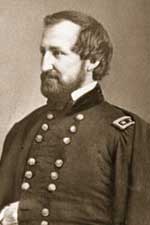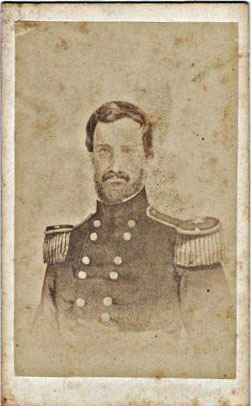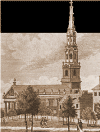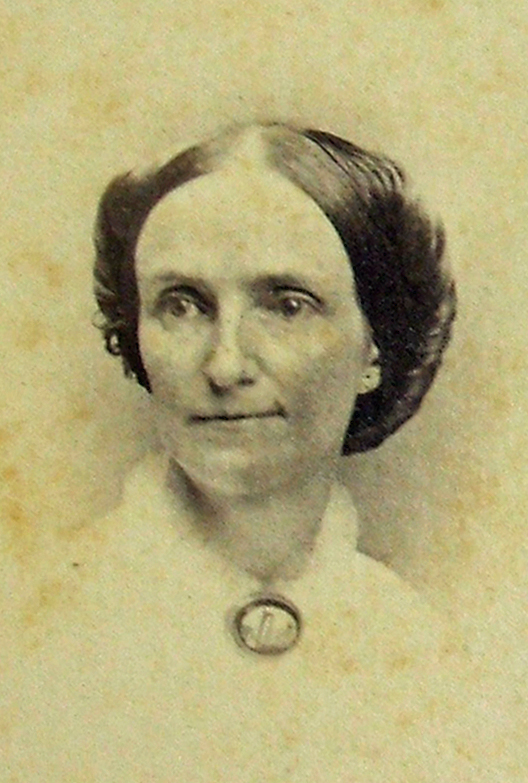| PART 2 |
|
||||||||
|
Major General William Starke Rosecrans |
|||||||||
|
West Point, 1837-1842 |
|||||||||
|
West Point was known as an Episcopalian seminary heavy on the classics
with the students divided by ability. Rosecrans was put in the
superior group. By midterm he was 8th in French and 5th
in math. By the end of his second year he was 5th among
231 corps members. The nickname "Old Rosy" stuck. |
|||||||||
|
William was a social and high spirited individual. Although he felt dueling stupid, he did manage to get pulled into fighting a duel involving a lady. Dueling was forbidden and would have met dismissal. Fortunately the challenger apologized when the excellent marksman Rosecrans selected pistols at 6 paces. While West Point taught military skills like marksmanship and riding, it did not teach military strategy. Professor Dennis Hart Mahon taught engineering and started the Napoleon Club to |
|||||||||
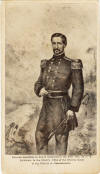 |
study Napoleonís campaigns. Only the best cadets became members of
the club and joined Professor Mahon on summer encampments where they
learned strategy and put it to use. Perhaps the hand in the coat
like Napoleon marked those that were in the Napoleon Club. |
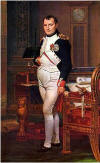 |
|||||||
|
Cadet |
Frederick the Great endeavoring to understand their grand strategy. |
Napoleon Bonaparte |
|||||||
|
In the fall of 1841, William Ranked 5th in his class and remained there through graduation. He was considered brilliant in mathematics and found French 'tolerably easy." |
Wikipedia Photo |
||||||||
|
"But how do I know that you are not playing a trick on me too?" asked Grant. "See my chevrons. I'm officer of the day." How much effect this encounter was to have on the rest of their lives is left to the reader's imagination. When
Cadets speculated who would be the most distinguished in later life,
by general agreement it was "brilliant
Rosy Rosecrans." |
|||||||||
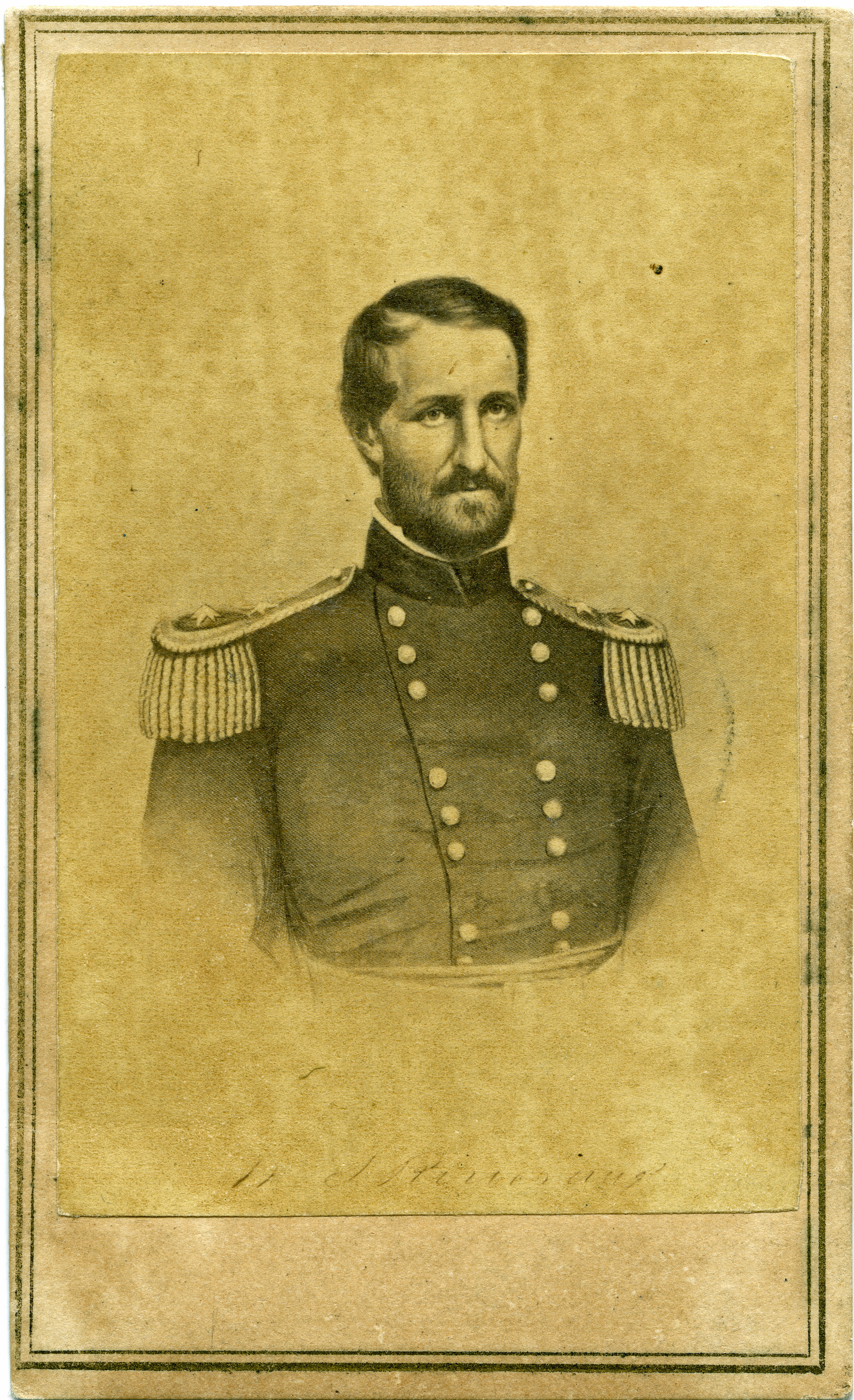 |
Army Corps of Engineers |
||||||||
|
The top seven graduates qualified for the Engineering Corps.
Fifth in the class, Rosecrans made second Lieutenant in the
Engineering Corps - a feat no other westerner had achieved.
His first assignment was to arrest the sea encroachments on Fortress Monroe at Old |
|||||||||
|
Point Comfort in Virginia. The project took a year to
complete. While he enjoyed the challenge of the work, the pay
was meager, promotions were slow and the turnover was small.
It was also a distance from Annie in New York. |
|||||||||
|
|
|||||||||
|
Ann Hegeman Marries W. S. Rosecrans |
|||||||||
|
On August 24, 1843, William married Ann Eliza Hegeman in St.
Paulís Chapel in New York. (St. Paulís Chapel is part of Trinity
Episcopal Church which remained standing across the street from the
twin towers when they fell during 9-11. George Washington attended
that church.) Ann was the daughter of Judge
Adrian Hegeman. |
|||||||||
|
Ann Eliza is usually referred to as Anne. I suspect she was called "Ann E." to keep her straight from the others named Ann and Eliza in her family. This was shortened to Anne which became the General's name for her. |
|||||||||
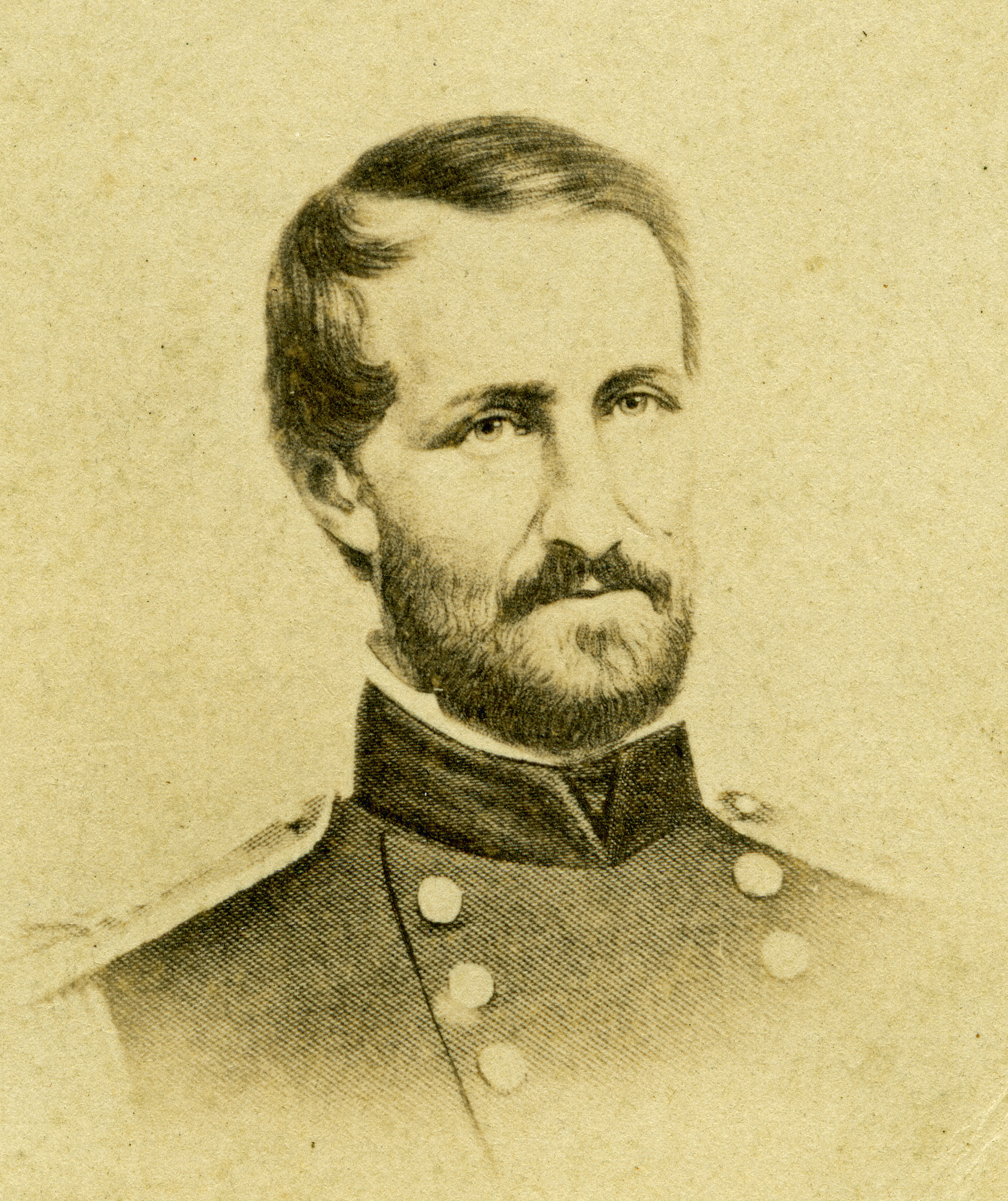 |
Since this is the General's story, I shall use his spelling of her name. Knowing William was still just a man from a small town in Ohio who always planned everything, I decided to find out more about his wife. I quickly discovered the Hegeman family was well known in New York and Anne had a brother William, When trying to determine why the Rosecrans family moved to Cincinnati, I discovered a William Hegeman married to a Miss Niven in that area. Their daughter Elise Ann married the Honorable Chauncey M. |
||||||||
|
Depew. Although several inquiries yielded no help, Mr. John Dobson knew the family descended of Adriaen Hegeman who was an early Dutch settler in New Amsterdam in 1652. He settled on the western side of Long Island.
The bridegroom's ancestor
Harmon Hendrick Rosenkrants came to New Amsterdam and married in
1657. Unfortunately on his wedding day his wife insulted the inn
keeper who was the fire warden (an appointee) and they were deported
to Holland for a year. Were the early families acquainted?
While the Rosenkrants were movers and spread across the country, the
Hegemans stayed in New York. Almost 200 hundred years later the two Dutch
families were joined. |
|||||||||
|
West Point Assistant Professor |
|||||||||
|
Following his wedding, First Lieutenant Rosecrans was appointed Assistant Professor of Engineering under his old mentor Professor Mahon. The next year he was the Assistant Professor of Philosophy. For two years following he was First Assistant Professor of Engineering. Some of this time he served, by request, as Post Commissary and Quartermaster. For nine months he was also in charge of erecting cadet barracks. Professor Mahan found his services "entirely satisfactory." Some who may have been in his classes were U. S Grant, Thomas J. Wood, Gordon Granger, George McClellan, Stonewall Jackson, George Pickett, Ambrose Burnside, and John Buford. Many comments made during the war and after make more sense when one remembers where these men stood at West Point. War with Mexico was declared in 1844. William's brother Henry served 15 months in a mounted unit under Zachary Taylor for which he was given a land grant in Iowa. 38 of William's 54 classmates also saw action but the military kept their engineers.In the Rosecransí home there were some rough times. Their first child, William S. was born in 1845 but died soon after. Another boy James Addison also died right away but the dates are not available. Perhaps this spurred Rosecrans to look more closely at his religion. |
|||||||||
|
Search for a Religious Home |
|||||||||
|
As a baby William Rosecrans was baptized by the Methodist circuit rider at his grandmotherís insistence. Williamís father used the Bible as his religion but followed no formal church services. However, both Kenyan College and West Point were Episcopalian. As an undergraduate, William was impressed by the Transcendentalists like Emerson and Thoreau. In 1844, an Irish book peddler told William about the Catholic Church and got him to read John Milnerís The End of Religious Controversy. This was an eye opener for William. He converted to the Roman Catholic Church. In 1845 William wrote to his brother who was in his 3rd year and Kenyon College and suggested he read the same book. |
|||||||||
_small.jpg) Pope Pius IX |
Later that year while Sylvester was visiting him, William again suggested he make the conversion. Before he returned home, Sylvester was baptized with William and Anne his godparents. For the remainder of the summer, Sylvester walked from Homer to Mt. Vernon (8 miles) to attend mass - often fasting so he could take communion. In the fall he transferred to a Catholic School in New York. He graduated top in his class and was recommended to attend the Propaganda in Rome to study being a priest. When he completed his studies, he was ordained into the priesthood in Rome. Meanwhile William Rosecrans carried on a long correspondence with Pope Pius IX which is now stored in the Vatican. |
||||||||
|
Stationed in Newport Harbor |
|||||||||
|
In 1847 William was again in active service and sent to design and rebuild fortifications along the east coast. The family moved to Newport, Rhode Island.. William constructed a military wharf, and worked on the batteries and interior arrangements of forts. He designed a general system of permanent barracks (which was approved by Captain Robert E. Lee) that would be used for 30 years. He also invented a way to dredge 30' deep which was eight times as efficient as using diving bells, and he perfected a rapid way to pour piers underwater. |
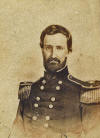 |
||||||||
|
At least one man was offended by his strong religious conviction and held this against him the rest of his life. When Rosecrans was chosen to replace Don Carlos Buell as commander of the Army of the Ohio, General Milo Hascall, who was serving under Buell, said of the time in Newport, ďAt that time he seemed to be a great enthusiast in regard to the Catholic Church; seemed to want to think of nothing else, talk of nothing else, and in fact do nothing else, except to proselyte for it and attend upon its ministrations,Ē he continued. ďNo night was ever so dark and tempestuous, that he would not brave the boisterous seas of Newport Harbor to attend mass, and no occasion, however inappropriate, was ever lost sight of to advocate its cause; in fact, he was what would nowadays be called most emphatically a crank on that subject.Ē Others did not agree but Hascall's resentment was obvious. In 1852 Rosecrans was sent to survey Taunton and New Bedford Harbors for permanent improvements. In three weeks he made 30,000 soundings |
|||||||||
|
Washington Navy Yard |
|||||||||
|
From April through December 1853, Rosecrans was a Civil and Construction Engineer assigned to the Washington Navy Yard. For the family, their time in Washington was a happy time but money was very tight. Anneís father was deceased so her mother Eliza lived with them and added her funds to the family coffers. Father Sylvester said William was "living on his wife" which would not go down well. Rosecrans served as Superintendent of a Negro Sunday School of 600 children. |
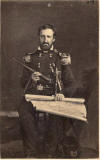 |
||||||||
|
Rosecrans was very busy. He constructed a marine highway, a large sawmill, remodeled and improved the Dahlgren ordnance buildings and made plans for an immense machine-shop which was a block of buildings 450 by 288 feet to house anchor, chain, cable, blacksmith, carpenter and block shops. It was designed to use a single engine to drive all the machinery and a single stack to vent the forges. Once again his efficient design would be followed when the Navy needed to construct other shops. His designs were approved and much admired. Rosecrans considered this one of his scientific efforts. Unfortunately, once again he drove himself too hard and his health failed him. When he asked for three months leave, he was told he could not be spared. Resolving to leave the service, he sent his resignation to Secretary of War Jefferson Davis. After assuring Rosecrans they needed him, Davis granted him the leave of absence and assured him that if he still felt he must resign after the leave, he would accept his resignation. After his three month's leave, Rosecrans' health had not improved enough for him to continue in the the military so he was obliged to persist in his resignation which became effective April 1, 1854. |
|||||||||
| Return
to
Rosecrans, Part 1,
Genealogy and Youth Return to Rosecrans, Part 2, West Point, Marriage, Engineers Corps Return to Rosecrans, Part 3, Civilian Inventor, Engineer Return to Rosecrans, Part 4, Civil War Return to Rosecrans Part 5: Post Civil War Civilian Goto Rosecrans Part 6: Equestrian Statue of William S. Rosecrans on his horse Boney Return to Bibliography |
|||||||||
Site Navigation Guide: The source is blue, learn more is in italics Click on photos to enlarge. Use BACK to return to this page © by Polly Horn for Big Walnut Area Historical Society |
(04/11/2017 |
||||||||
